The Independent's journalism is supported by our readers. When you purchase through links on our site, we may earn commission.
Getting off the beaten track in Crete on a road trip to the Greek island’s rebellious heart
Forget fly and flop: central Crete’s highlands have long been a stronghold of resistance against invaders throughout the island’s history. Len Williams takes a drive through this fascinatingly rebellious region
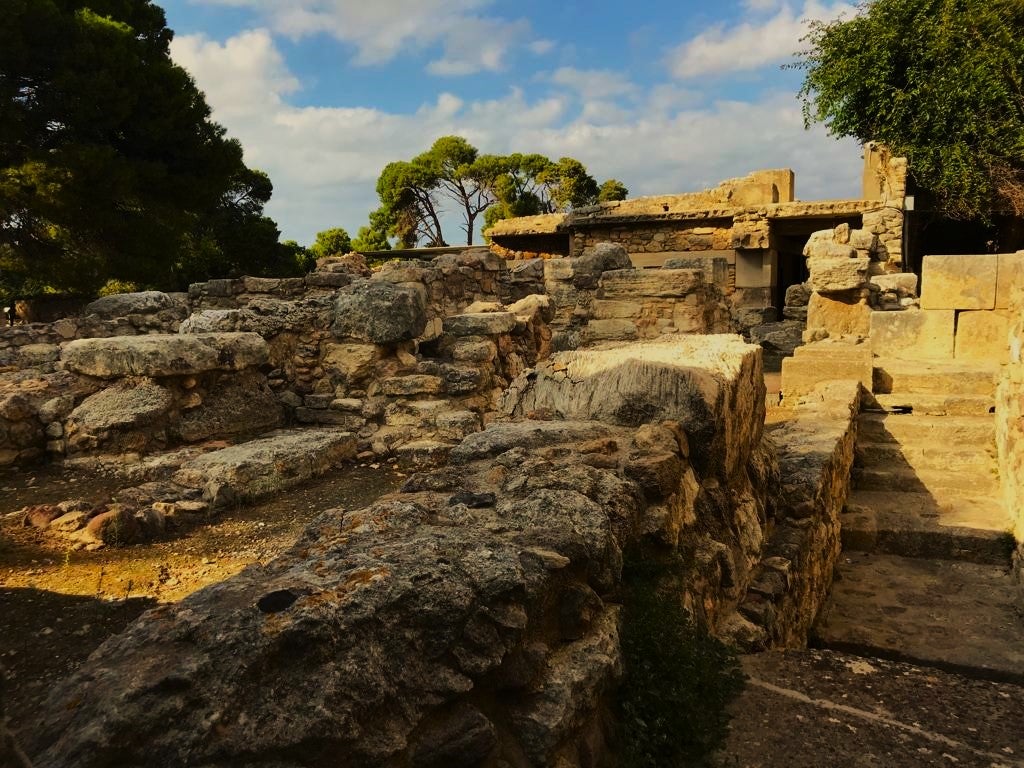
I am standing in a narrow, rectangular room in one corner of the Arkadi Monastery in central Crete. The space is open to the elements, but you can see where the vaulted ceiling once began. At the far end of the room, a mural depicts a Greek Orthodox priest holding a cross in one hand, and a candle in the other. Surrounding him are depictions of terrified-looking women and children.
The artwork imagines the final moments of several hundred Cretans who were hiding in the room after the besieged monastery was overrun by Ottoman troops on 9 November 1866. Rather than be taken prisoner, a priest lit gunpowder kegs, blowing off the roof and killing everyone inside.
An army of 15,000 Ottomans had encircled the monastery the day before, attacking about 300 Cretan resistance fighters, monks and 600 or so civilians from the surrounding villages. Standing in the room, I can barely imagine the fear and panic of the people crammed into the tiny space – it’s about 21m x 5m. What must have been going through their minds? While some may have been resigned to their fate, others might have been desperately praying for a reprieve. A few might have felt it would be better to surrender.
Read more: Best hotels in Crete
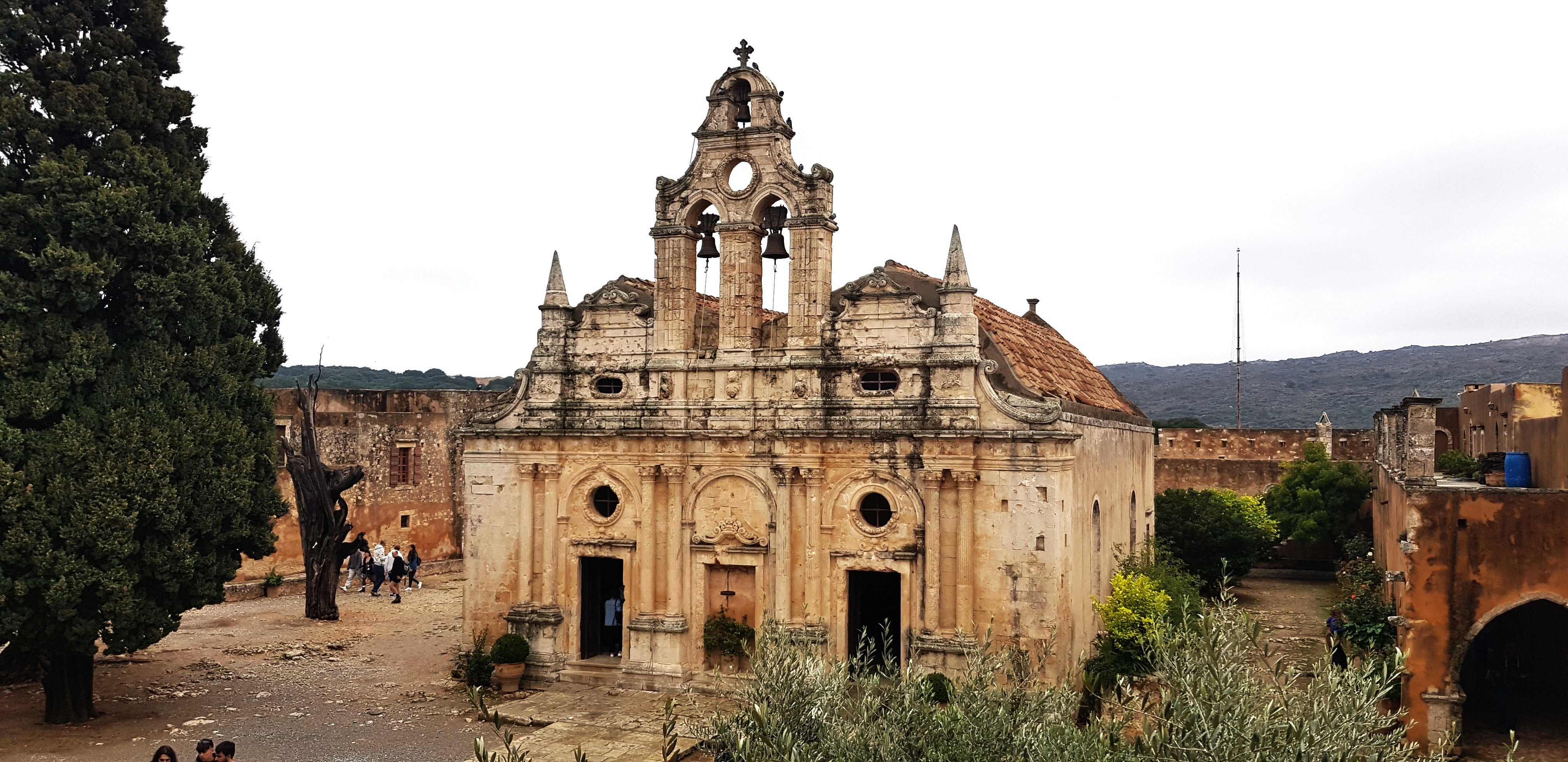
I step out of the room and back into the monastery’s square courtyard. In the centre, there’s a Venetian-style church, cloisters around the edge and thick walls that give it the appearance of a fortress (a handful of monks still live and work there). While the vast majority of the resistance fighters and civilians died in the defence of the monastery, their sacrifice was not in vain; it helped spur on international support for the cause of Greek independence.
This sobering moment at the Arkadi Monastery was the first stop on a day-long road trip into the Cretan countryside. Setting off from the pretty coastal city of Rethymno, my partner and I turned off the busy coastal highway and headed inland. Here, we followed quiet country roads that weaved up into the hills through villages of mainly modern, concrete structures. After leaving the monastery, we followed an isolated mountain road which gave wide views over low-lying brush and stony fields as we drove to Eleutherna, the site of an ancient city dating back almost 3,000 years.
Upon arriving in nondescript modern Eleutherna, we parked by an abandoned taverna. Much of this ancient city, which began its final decline after an AD 796 earthquake, remains overgrown and archaeologists continue to make discoveries (which can be viewed at a nearby museum). To reach the acropolis, we followed an uneven stone path leading to a dilapidated tower that would once have offered a lookout over the ridge that falls away steeply on both sides of the site. The roots of gnarled old olive trees strangle blocks of ancient masonry; further along, you can visit a necropolis, an ancient bridge and cisterns.
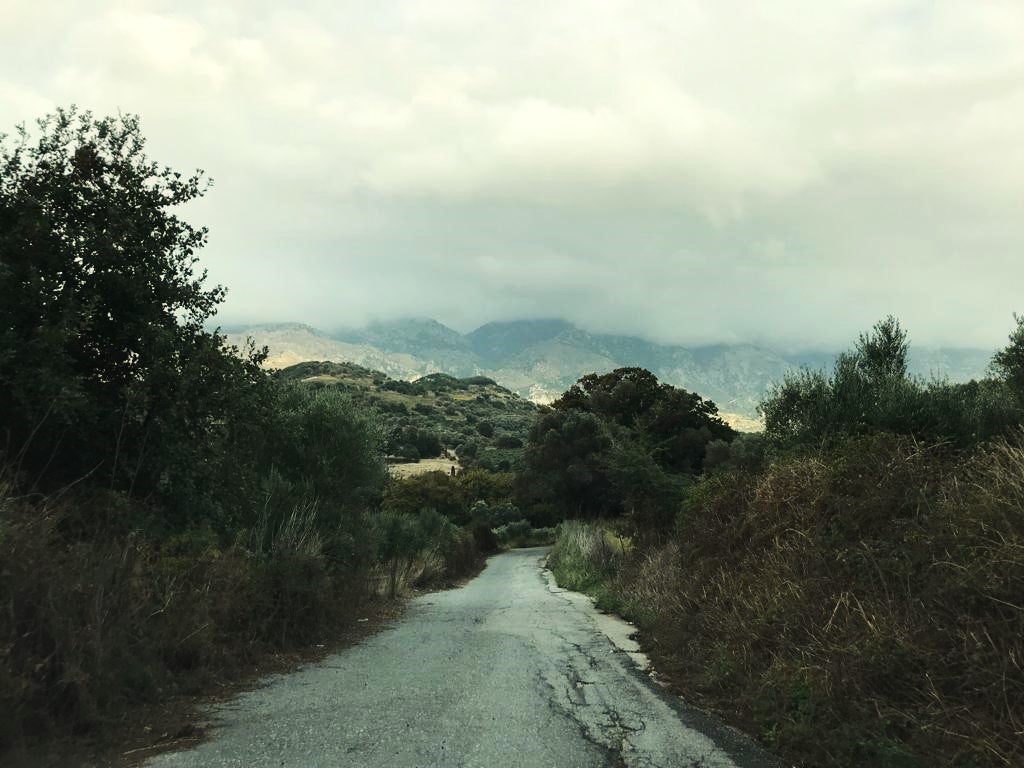
Enough history. It was time for lunch. But on trying to leave Eleutherna’s car park, we quickly regretted accepting the car hire company’s free upgrade to a chunky SUV. What appeared on the GPS to be a normal road from the car park to the main route transpired to resemble more of a tight alleyway, prompting some very nervous reversing along a narrow uphill lane back to the carpark and out another way. This experience is not unique in the Cretan interior, so inexperienced drivers may wish to proceed with caution (or, better still, leave the driving to someone else).
Read more on Greece travel:
Eventually we reached Margarites, a village on a hillside whose central road zigzags down into a valley. We parked up by chance outside the excellent Taverna Veranda, and sat at an outdoor table with views over olive tree draped hills and nearby allotments bursting with tomatoes, courgettes and aubergines.
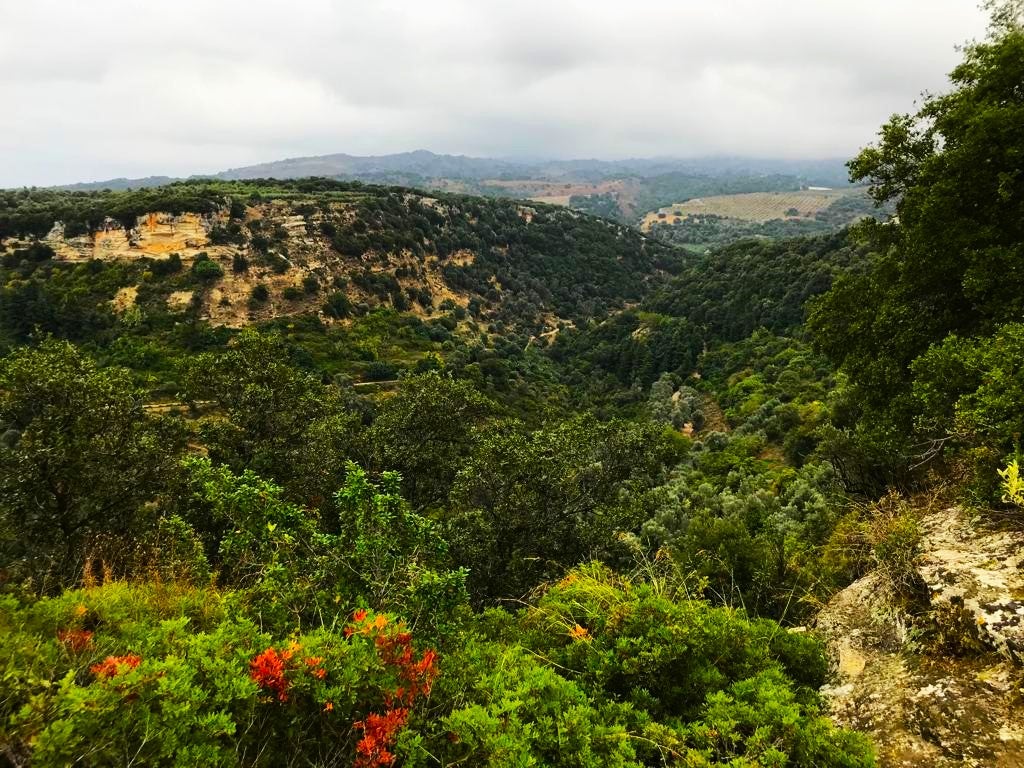
This crop seemed to constitute a large part of what we ate for lunch: typical Cretan cuisine comprising crispy and chewy courgette fritters, an aubergine moussaka, and a Cretan salad formed of creamy feta cheese, barley rusks, tomatoes, olives and cucumber drenched with olive oil and red wine vinegar. We then mooched around Margarites, known for its pottery shops, and were momentarily tempted by some very beautiful but expensive plates.
Back on the road, we turned around and headed south and inland to the Amari Valley proper. This fertile valley is nestled in the foothills of Mount Kedros and Mount Ida (Crete’s highest peak). On the day we visited, a thick bank of cloud rolled moodily down one of the valley’s steep walls. Small farms dotted the landscape, surrounded by olive groves, orchards, patches of brush and pine.

Just like the Arkadi Monastery, this lush valley had also been a site of persecution and rebellion. During WWII, the Nazis occupied Crete, but encountered determined resistance, with the valley and its surrounding mountains and gorges an ideal hideout for guerrillas.
On 22 August 1944, Nazi soldiers conducted a massacre against the residents of nine villages in the valley suspected of helping the resistance. In total, 164 male civilians were executed, while the remaining men, women and children were taken prisoner. The villages were looted and many homes dynamited, while the villagers’ crops were destroyed.
This atrocity is known as the Holocaust of Kedros, but it’s still not clear exactly why the villages were singled out. Historians hypothesise that it was an act of pre-emptive terror. As the war’s end approached, the beleaguered Nazis were withdrawing to Chania on the coast and perhaps wished to cover their flanks.
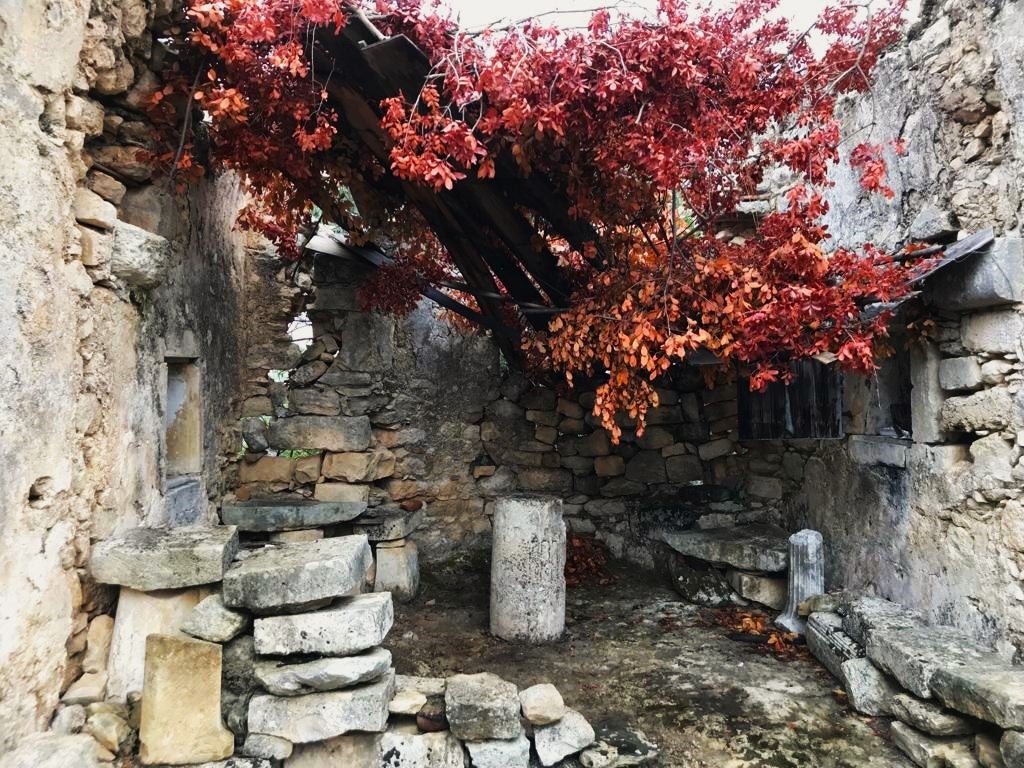
After exploring the valley, we turned around and drove north along winding roads back to the coast. This enjoyable drive provided views of rolling hills, ravines, reservoirs and remote villages, before the sea eventually opens up below.
Visitors justifiably congregate on Crete’s stunning coast for the traditional combo of sun, sea and sand. But its heartlands offer an intriguing, rewarding excursion, giving a different perspective on the island’s landscapes, history and indomitable spirit.
Travel essentials
Getting there
Trying to fly less?
Take the Eurostar to Paris, then change to the TGV from Paris to Milan. From there, Trenitalia will take you to Brindisi. You can get a night ferry to Greece’s west coast, followed by buses to Athens and another ferry to Crete.
Fine with flying?
Ryanair, Wizz Air and easyJet all fly daily from major UK airports to Chania and Heraklion.
Staying there
Set in the heart of Rethymno’s old town, Pepi Boutique Hotel puts you in easy striking distance of the city’s beaches, restaurants and bars. Adults-only, and with plenty of character (it’s retrofitted onto what was once one of Europe’s oldest public primary schools), the hotel stocks an extensive cellar of Cretan wines. When you’re not out and about, while away the time by the pool or enjoy garden views from any of the high-ceilinged rooms and apartments.
More information
We hired a car through Budget in Rethymno, costing £20 per day.
Join our commenting forum
Join thought-provoking conversations, follow other Independent readers and see their replies
Comments
Bookmark popover
Removed from bookmarks